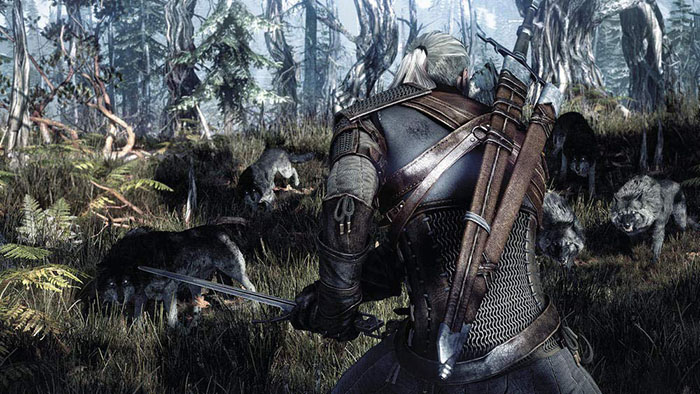
For gamers, the prominence of easy internet access has mostly meant having the ability to easily play multiplayer games with friends and strangers alike while sitting in their own living room, but for game publishers, this innovation has been most significant for the ways it has allowed extra monetization to be added to games. While players used to mock grabs at their wallets like Oblivion’s downloadable horse armor for being egregious, it didn’t stop the industry from pushing online monetization even further. Out of nowhere, features that came standard with game purchases like alternate skins and weapons had to be bought with extra money from an online store while games like Street FighterxTekken and Asura’s Wrath had part of their completed games deliberately removed only to be sold back to players for a fee, the latter even gating the end of its story behind a digital paywall.
This trend has progressed to a point where major publishers push their games as what they call “live-services.” While these are in many ways the final form of sorts for full-priced games which emphasize DLC economies, their effect on games and their players is entirely unique, but like with anything else in an artistic medium, live-services are not inherently bad. They can detract from games when done badly, of course, but they can also add to them tremendously when done well. We're here to look at both types of live-services today to help you recognize the ones that have your best interest in mind.
Who Gets It Wrong?
The concept of a live-service is simple on paper, simply adding post-release content to a game on a consistent basis so that consumers can get more out of games they like. But a lot of the more notorious examples of these live-services are less about playing and more about paying. Much like on-disc DLC before it, the live-service model has been widely used to charge players for the core content of their games after they’ve already paid for said full-price game to begin with. Not even save slots are protected from this aggressive monetization, as seen with Metal Gear: Survive and the $10 it charged players for each additional save file. In many ways, these are still the same monetization strategies we saw with the likes of Oblivion and Asura's Wrath, but they take a much more central part in the direction of the games. Many games like For Honor or Street Fighter V are sold for full price at launch despite only being skeletons of a game, with the bulk of their features promised to be added at a later date, making players buy promises more than they buy games.
The most popular form of live-service exploitation is on a much smaller scale, however, to the point where many can potentially miss how predatory it can be. Small recurring microtransactions are the lifeblood of the big live-service games not only because they generate large masses of revenue, but also because how severely many of these games have been altered to incentivize these frequent small purchases. These live-service games are structured to frame the downloadable items sold throughout their cycle of service as the ostensible reward for skilled performances in their games. This is most commonly seen in loot box economy games, where the only reward for playing is receiving boxes that will award random in-game items of variable value. These live-service games center their economies around releasing a steady stream of new items to be won through these randomized awards while charging players money for the option of receiving them without having to put the time into the gameplay, “skipping the grind” as PR reps call it. Of course, when a game is being described by those making it as a “grind” that should be a fairly clear indication that it probably won’t be much fun, yet attaining these incentives without spending money is often just that as part of a greedy bid by games like Star Wars Battlefront 2 (2018), Call of Duty WWII, Overwatch and most recently Anthem to overreach into players’ wallets. Anthem probably serves as the best example of how badly this changes games, as early adopters were very happy with the rate of in-game rewards… only to later be told by BioWare that this was caused by a bug that would quickly be patched out, making the game such a tedious grind for those not buying their loot as to cause a boycott. The incident showed us what this sort of live-service design is about: selling games designed to convince you to spend money to not play.
Who Gets It Right?

With all these different ways of nickel-and-diming players, it seems as though the live-service model only exists to rip players off, and it may have arguably started that way, but the best thing about gaming is that anything can be made fun in the hands of talented creators. You don’t really need a genius of game design to know how to pull this sort of business model off well, though, since all a successful live-service needs to do is to actually serve its clientele instead of making them bend backward, but many recent games heralded as modern classics have attained such a status by going above and beyond with this simple but effective concept. The Witcher III: Wild Hunt, for example, launched long before the live-service term was coined. The base game is an expansive nearly 100-hour RPG with deep systems and a fully-realized open world and a complete campaign, yet it received several small free goodies after its release containing everything from cosmetic items to new missions. Players were served a gaming experience that expanded live before their very eyes (see what we did there?) in a way that was convenient and easy for players. This post-launch support even brought 2 expansion packs soon after, which gave buyers much larger new experiences, while others still had a completely fleshed-out game at their disposal.
If you’re thinking this site about Japanese media has been talking too much about Western games, fear not. Nintendo has arguably been the king of proper live-services. It all started with Hyrule Warriors, which had a smorgasbord of launch content that featured a satisfying beginning middle and end, but whose limits were greatly broadened by free and paid post-release content. Increased level caps, new consumable items, new cosmetics, and new playable characters. Their Splatoon series has continued that tradition, admittedly beginning as a sparser experience than the last 2 examples but being supported by free updates on a practically weekly basis with new maps, weapons and live online events where the Splatoon community could engage in friendly competition in real time. Splatoon 2 even got a purchasable side-campaign that expanded the game’s world without taking anything crucial away from owners of the base game like the negative examples we’ve looked at would. The bottom line is that good live-services serve consumers first and companies second.
Final Thoughts

Our view on what separates good live-services from bad can be boiled down to a few simple questions: Is the game worth a full price without additions? Is the post-launch content building upon a complete game, or charging extra for key features? And most importantly, is the service fun?
But whatever you may think of live-services, be sure to let us know in the comments and while you’re down there tell us your favorite example of this sort of game and how you feel its continued expansion has benefitted you.
Recommended Post
[Editorial Tuesday] The History of Microtransactions
Recommended Post
What is a 'Whale' in Gaming? [Gaming Definition, Meaning]
Recommended Post




